Try the new IKO website at https://beta.ikointl.com/
Help< > Pro Course
Author: Marica Moda
Boost Your Confidence on the Water: Essential Tips for Kitesurfing Success
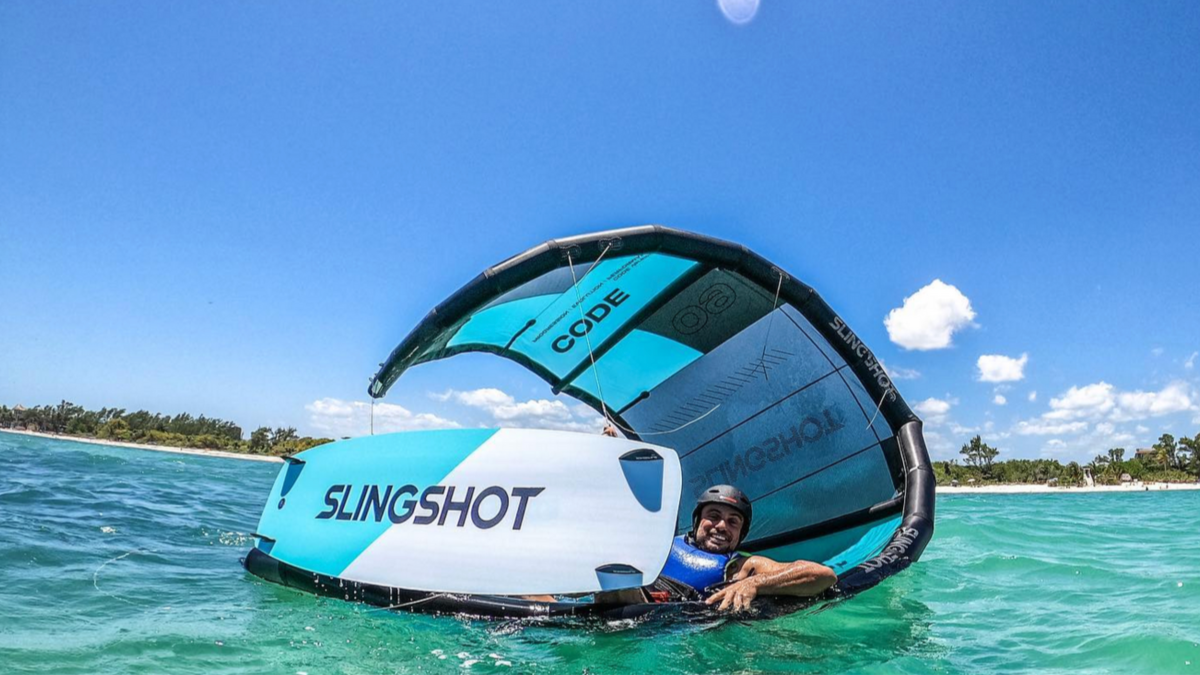
Kitesurfing is an adrenaline sport that mixes board riding with wind power for an exciting rush. It can be thrilling yet intimidating for beginners. To fully enjoy and master kitesurfing, confidence is key. Whether catching your first wind or leveling up, here are tips to boost your confidence on the water!
Nailing the Basics: Your Ticket to Kitesurfing Confidence
Mastering kitesurfing starts with the basics. Dive into lessons with an IKO-certified instructor who will guide you through the fundamentals, such as spot assessment, gear handling, how to use safety systems, launch, and land as a pilot, kite control, body dragging, steady-pull, and water starts. Also, learning how to perform self-landing during your lessons is crucial from the beginning. This skill ensures you're equipped to handle your kite safely when needed.
Why choose an IKO instructor?
- Top-Notch Training: IKO instructors provide a standardized, high-quality safety and best practices curriculum.
- Global Recognition: IKO certification is recognized worldwide, making it easy to continue improving wherever you kite. Get your IKO Vcard with an IKO instructor!
- Safety First: IKO instructors are trained to handle any situation on and off the water so you can confidently learn.
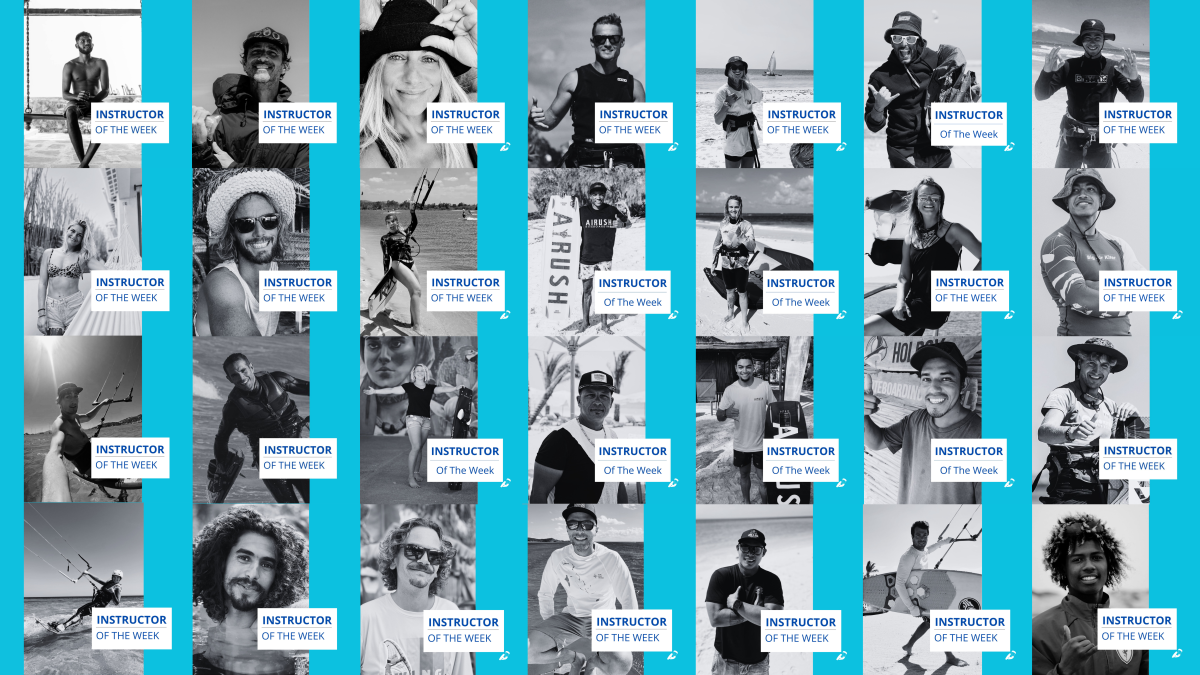
Take your time—each mastered skill builds confidence and brings you closer to pro status. The IKO Assistant Training Course - ATC is a fantastic next step in advancement. It’s ideal for independent kiters eager to enhance their skills and become a kitesurf specialist. Plus, it’s the first step towards a kitesurfing career with IKO. For more info, visit the IKO website.
Master the Skill: The Secret to Consistent Kitesurfing Practice
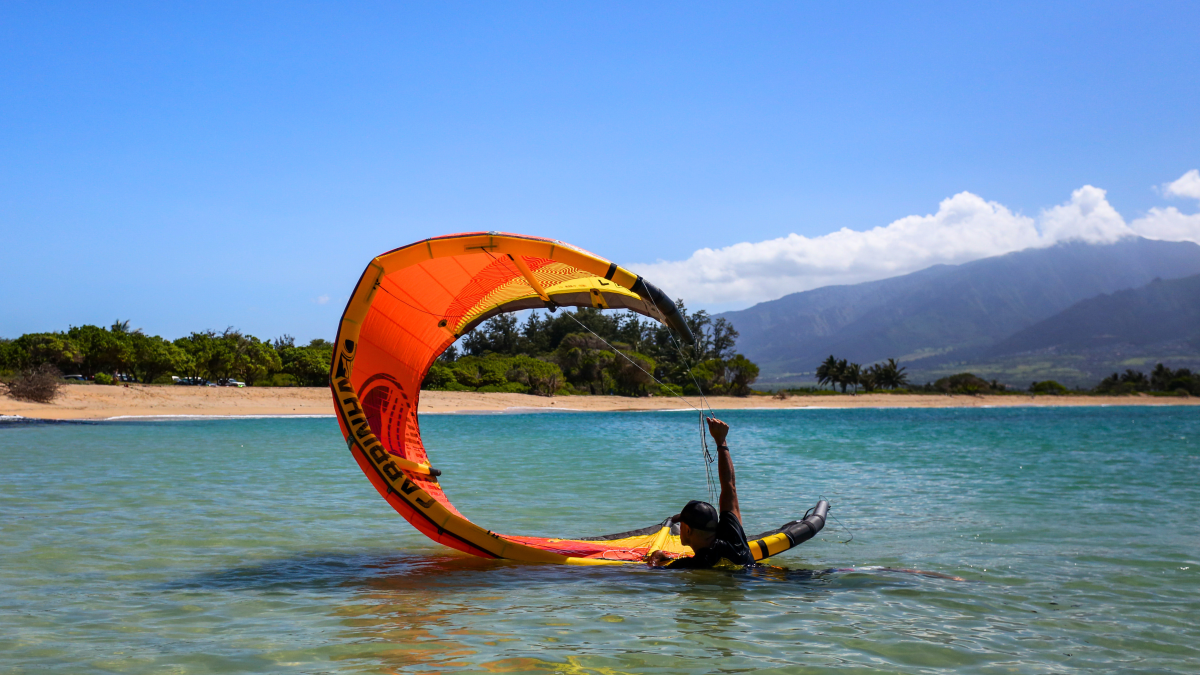
Kitesurfing improves with regular practice. The more time you spend on the water, the better you'll know your gear and handle different conditions. You'll become a versatile kiter by exploring various spots, ready for any challenge. Always prioritize safety by practicing techniques like self-rescue regularly. As you gain experience, learn how to perform self-rescue, self-launching, and pack down in deep water with an IKO instructor to enhance your skills further.
Consider attending the IKO Assistant Training Course - ATC to boost safety and skills. It’s your gateway to enhancing riding skills and mastering essential safety techniques like self-launching, board and kiter recovery, and assisting a fellow kiter. For more details, follow IKO on Instagram and Facebook, and check out the IKOIntl YouTube channel.
Get to Know Your Gear: The Key to Kitesurfing Confidence
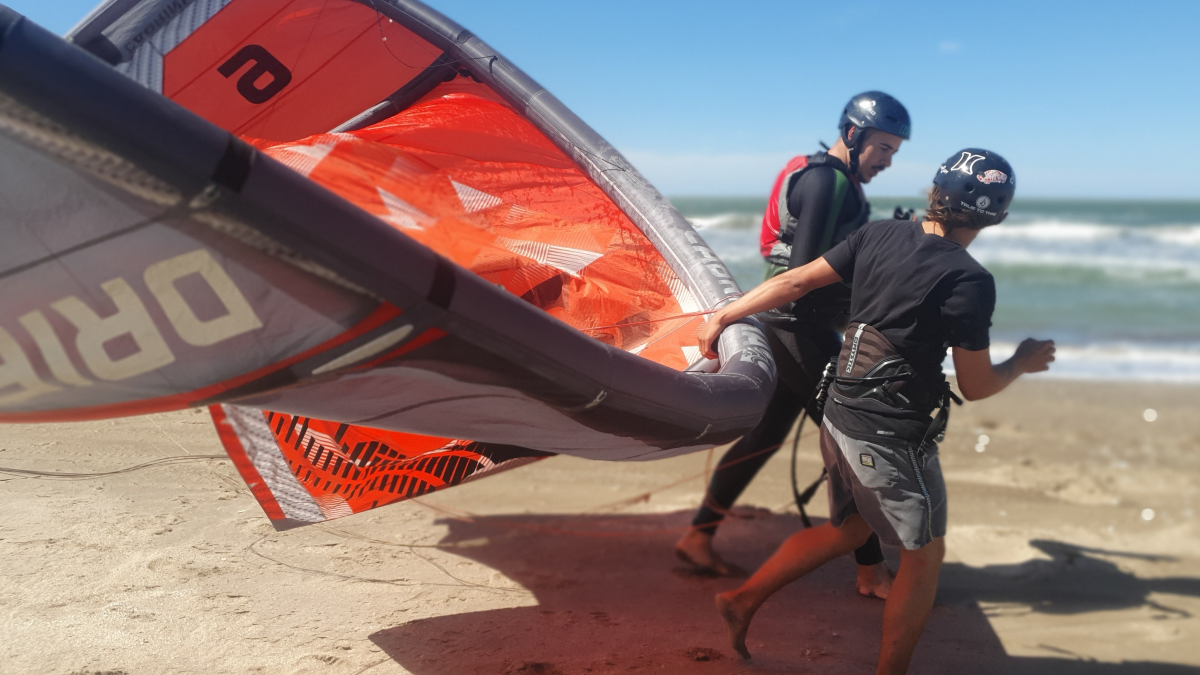
Your kitesurfing gear is your key to success. Master how to set up, pack, store, and repair your kite, manage your lines, and adjust your harness, helmet, and impact vest or buoyancy aid. Knowing and keeping your gear in top shape will boost your confidence and safety.
The IKO Assistant Training Course - ATC will give you all this information and more.
Take Small Steps and Savor Every Win
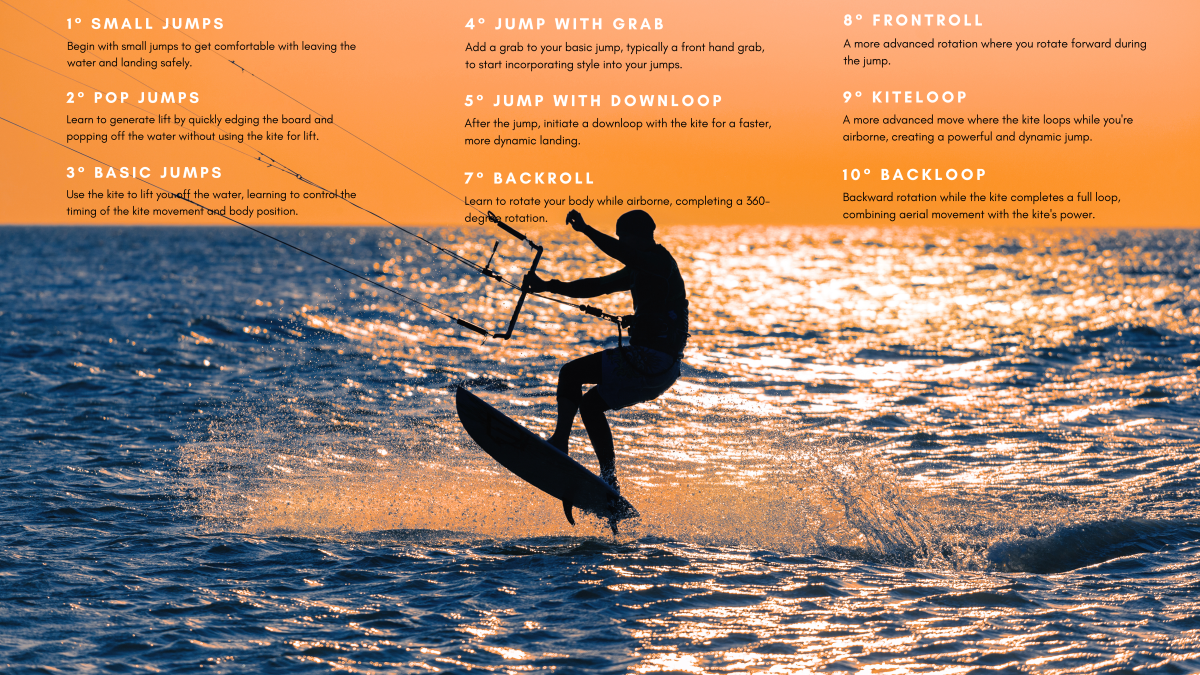
Don’t rush—mastering kitesurfing is a step-by-step process. Focus on one skill at a time and celebrate each small success. This approach ensures steady progress and keeps you motivated and confident.
The IKO Lesson Plan offers a structured guide for constant progress. Each phase builds a strong foundation, leading to continuous improvement. Your IKO certification and Vcard will proudly display your achievements once you’ve mastered the skills.
Find Your Crew: Boost Confidence with a Kitesurfing Community
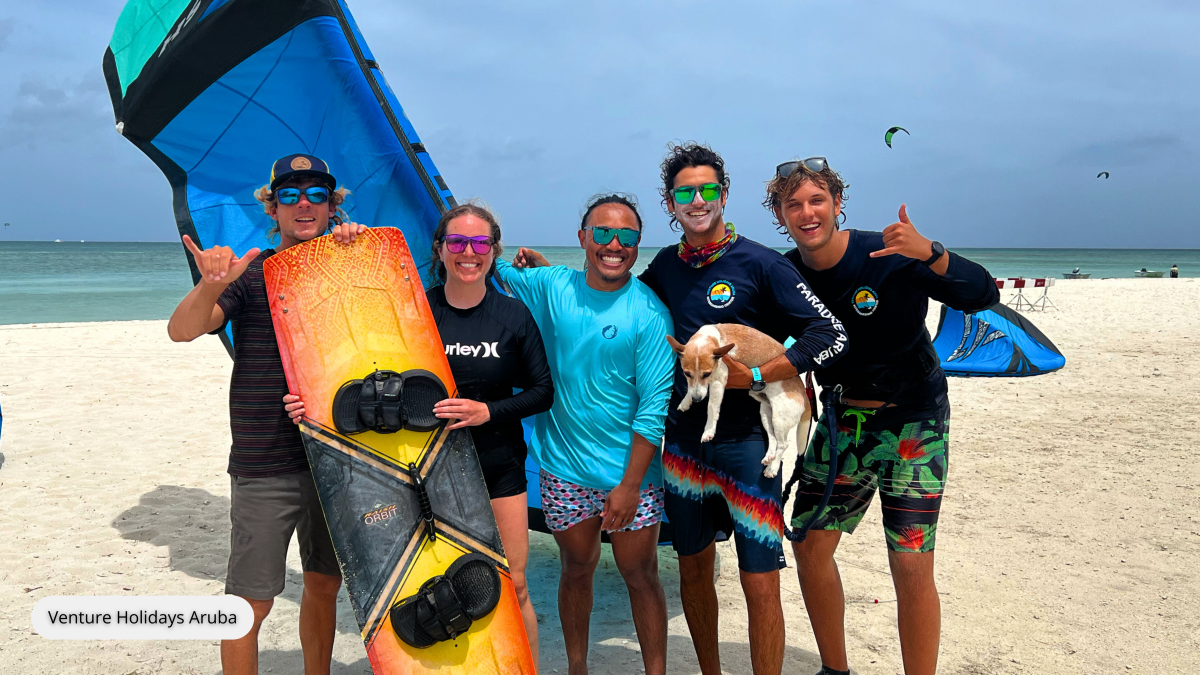
Joining a kitesurfing community boosts your confidence. Share stories, get tips from experienced kiters, and support each other through challenges. You'll also learn beach and water etiquette, ensuring respect and safety for everyone. Connect with the vibrant community through IKO’s Instagram and Facebook, and watch the inspiring videos on the IKOIntl YouTube channel.
Keep Your Head Up: Master Confidence with a Positive Mindset
Your mindset is your secret weapon. Embrace positivity, even when things don’t go as planned. Every mistake is a chance to learn and grow. Don’t let setbacks get you down—it’s all part of the journey. As you overcome challenges, your confidence will soar.
Useful Resources
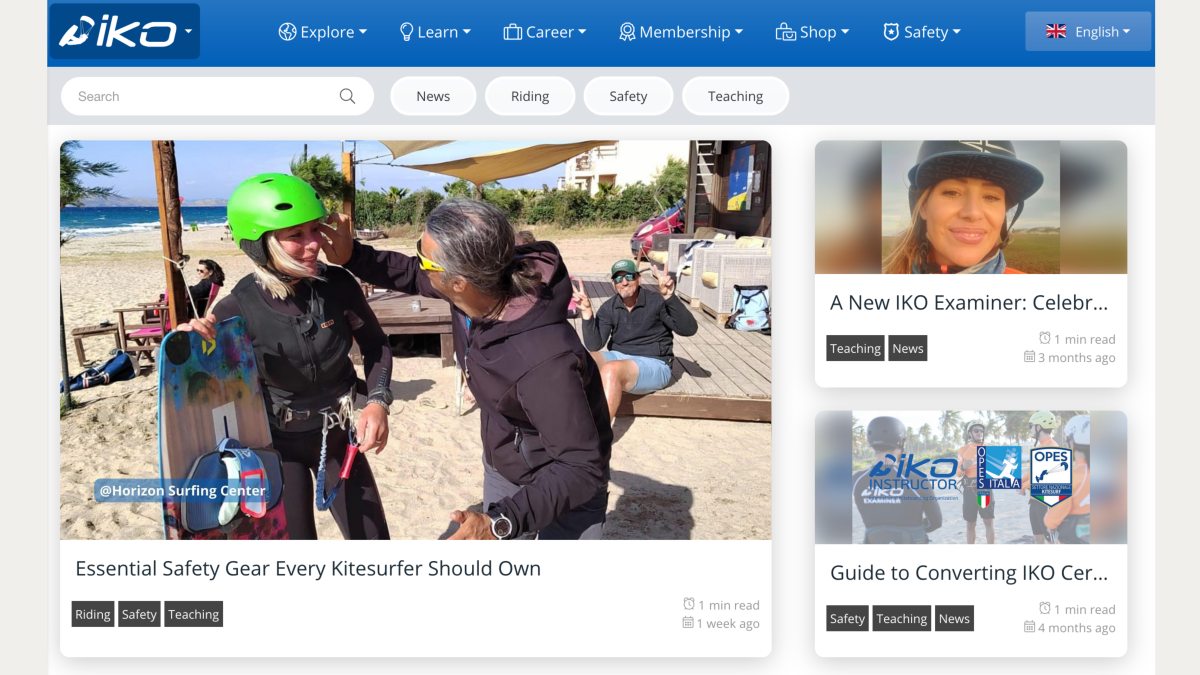
Don’t miss the opportunity to deepen your kitesurfing journey further by reading the IKO blogs.
A must-read is Become a Better and Safer Kiter: Take the IKO Assistant Training Course and Instructor Training Course. Check out the helpful YouTube video that explains the self-rescue procedure, which is essential for every kiter’s safety.
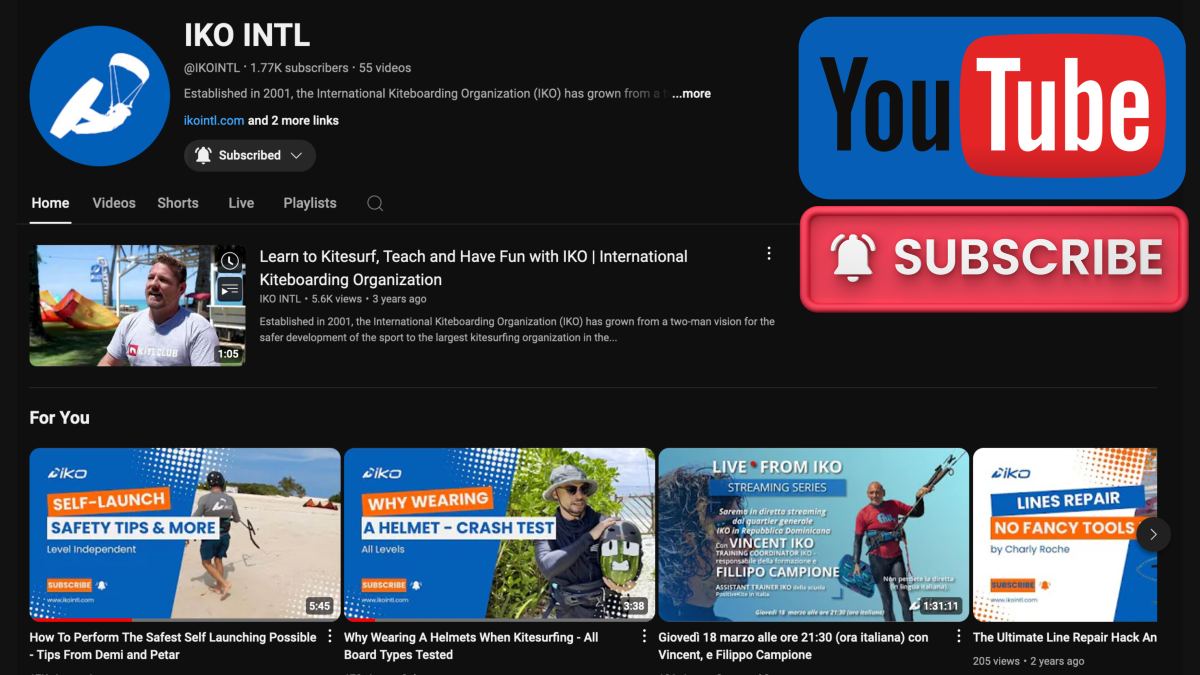
Hey Kiter, Never Stop to Improve Yourself
Building confidence in kitesurfing takes time, practice, and patience. Start with the basics, practice regularly, understand the conditions, and respect your kitesurf level. Enjoy each session and consider the IKO Assistant Training Course (ATC) to enhance your skills. Every kitesurf session brings you closer to becoming a safer, more skilled kiter.
#wearahelmetlikeapro #besmartbesafe #safetyfirst #kitesurfingwithiko
Happy kiting!
Author: Marica Moda
Equipped for any kitesurfing adventure
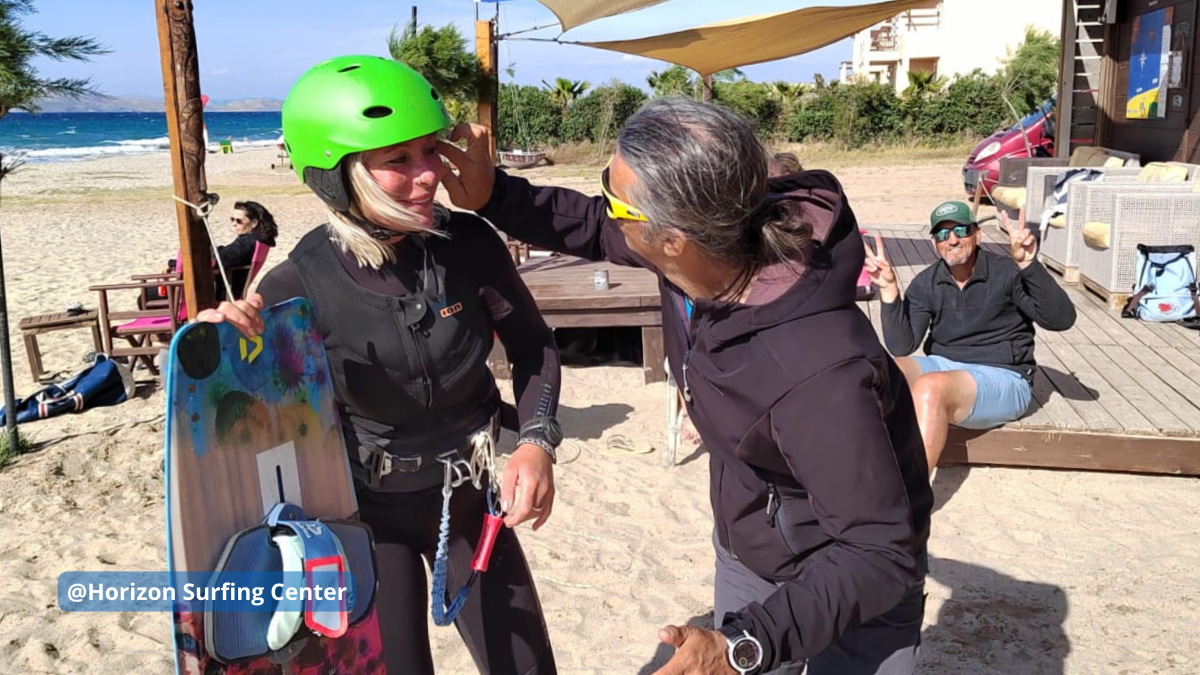
Kitesurfing is pure adrenaline, but like any sport, it carries risks. The proper safety equipment in full working order ensures safe and enjoyable kitesurf sessions; these are good suggestions that IKO wants to give you.
Helmet: Make a Difference by Wearing One.
Ever heard that "helmets are uncomfortable and only for beginners"? It's time to dispel that myth! Your helmet protects you from falls and collisions, whether the water is flat or wavy. Think of the helmet as a shield, like your cell phone cover. It protects you from the sun and defends you during unexpected falls or collisions with the water, your board, or other kiters or obstacles. Kitesurfing helmets are lightweight, comfortable, and designed to withstand hard impacts. They are equipped with drainage holes to prevent the chin strap from causing breathing difficulties underwater and help keep your head afloat if needed.
Helmets are cool and customizable! You can choose vibrant colors, add stickers, or design it to reflect your style. Remember, there's nothing more important than protecting your head. Wear your helmet proudly, just like the pro riders do. Be ready for any adventure.#wearahelmetlikeapro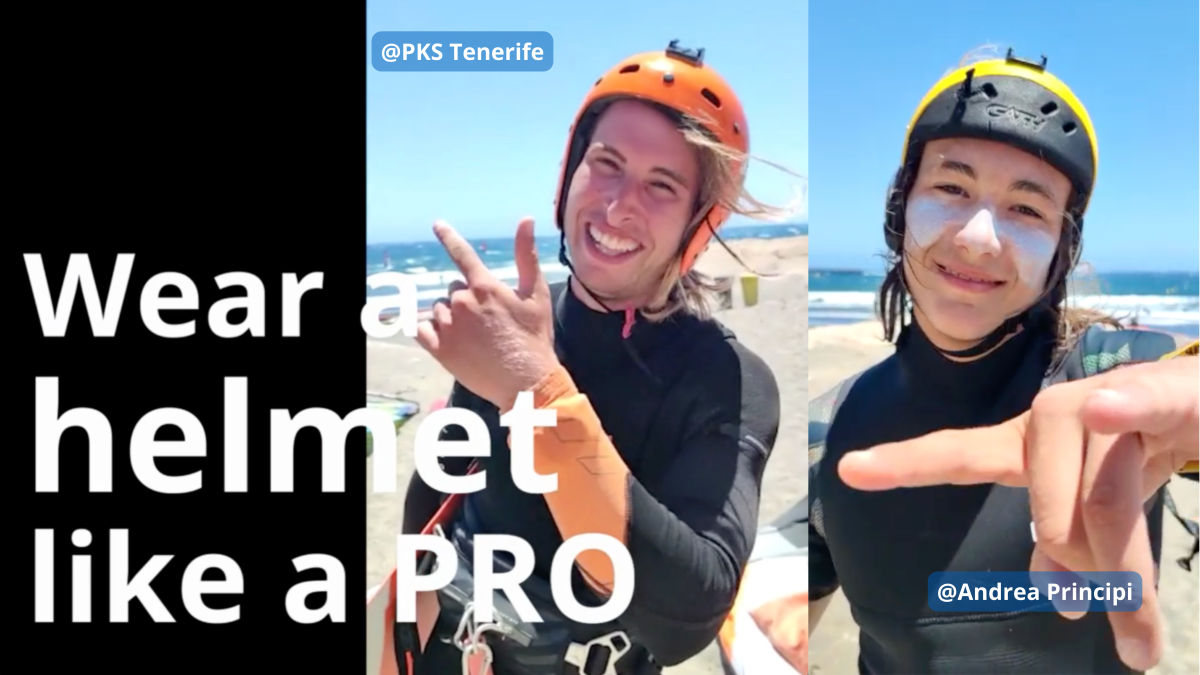
Check out the video on the IKO YouTube channel.
Buoyancy Aid (50 N): Your Protection of Safety
Wearing a buoyancy aid with 50 Newtons (N) during kitesurfing lessons is mandatory when learning with an IKO instructor. This is crucial for your safety. Even in shallow water, unexpected falls can occur. A buoyancy aid keeps your head and torso above water, allowing instructors and rescuers to assist you easily in need.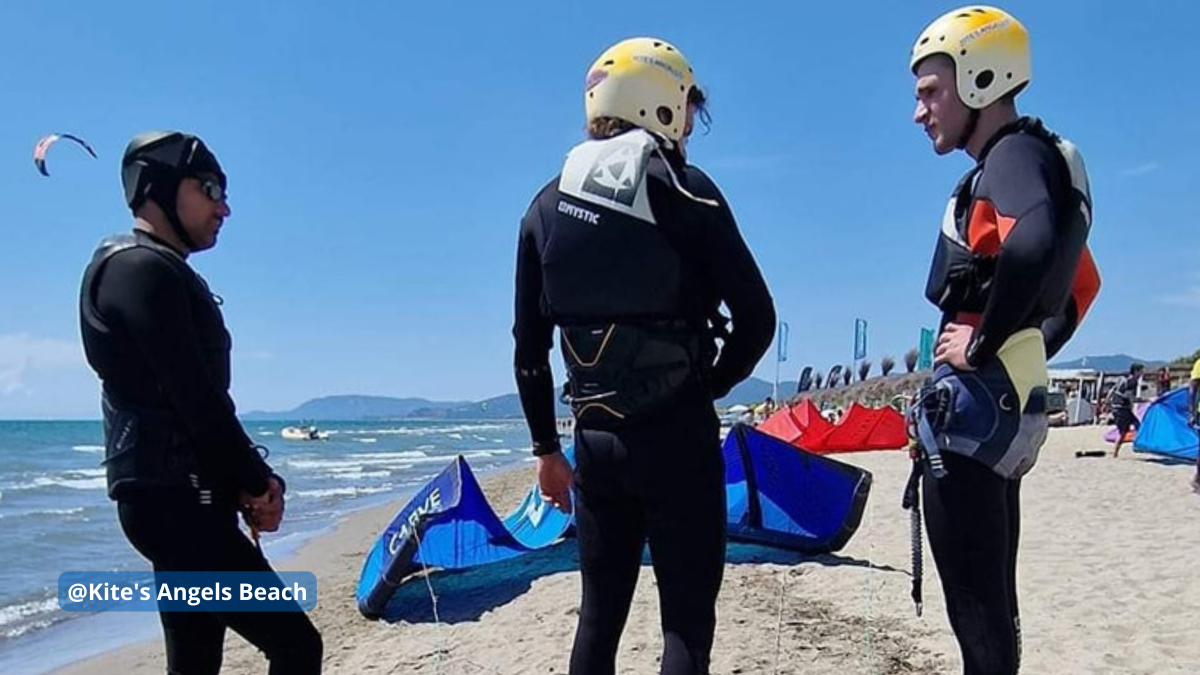
Impact Vest: Everyday Buoyancy Aid
An impact vest provides more agility but less buoyancy compared to a 50 N buoyancy aid. It is called an "impact" vest because it protects you from impacts during falls. While it offers some buoyancy, its primary function is to protect your torso from impacts during jumps, freestyle, or advanced maneuvers with a higher risk and probably hard falls, reducing injuries.
Make sure your vest is well-fitting and comfortable. It should allow you to breathe well without overtightening your rib cage and provide full mobility. This ensures you can perform all maneuvers without feeling restricted.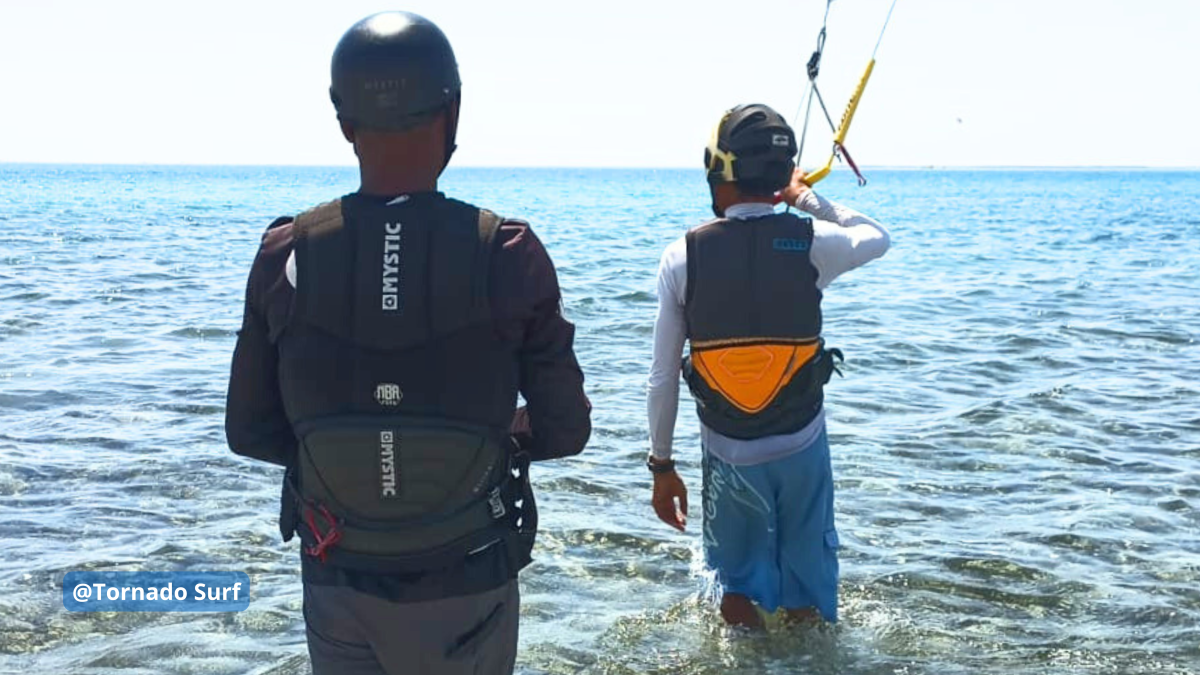
Kite Leash: Your Inseparable Companion
The kite leash is a crucial piece of safety equipment in kitesurfing. According to IKO standards, attaching the kite leash to the front of your harness is essential. This ensures you can easily reach it with both hands in an emergency. Fastening it behind or to one side of the harness can pull you backward or sideways, making it hard to reach the quick-release system.
Attaching it to the front ensures the quick-release system works properly and doesn't snag on your harness hook. Always test the kite leash before entering the water to ensure it is not blocked by salt or sand, including the quick release of the chicken loop. It's better to know it works before you enter the water than to find out in an emergency.
Kite Line Cutter: Your ace in the hole
IKO recommends having a line cutter as part of your safety gear. Keeping it on your harness can turn a dangerous situation into a story to share with friends on the beach at sunset. It’s an investment in safety for you and other kiters in case someone gets tangled in the lines. Be aware that not all harnesses come with a line cutter included. Check your harness to see if it has one, and if it doesn't, make sure to get one separately. Regularly ensure the blade isn't rusted, just as you check your phone's battery before leaving the house.
To prevent the blade from rusting, cover it with candle wax. This will protect the blade from water, salt, and sand, but it will also ensure that if you need to use the line cutter, the wax will quickly come off, allowing the blade to work effectively.
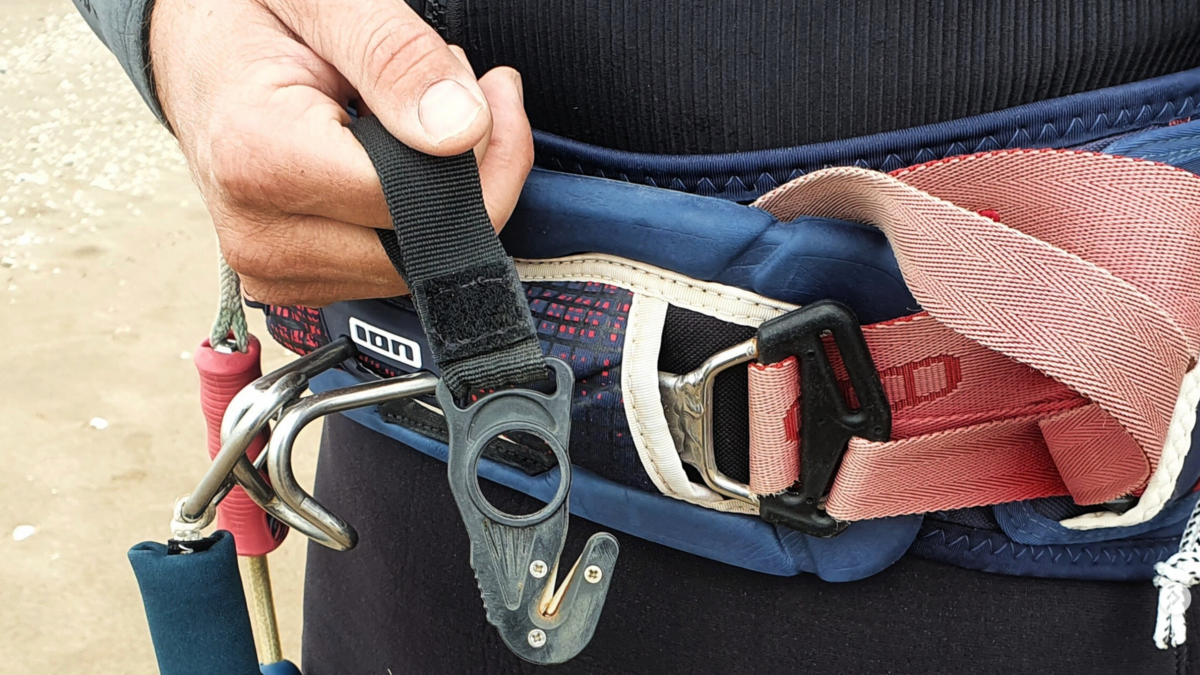
#BeSmartBeSafe
Equipping yourself with the must-have safety gear is about following guidelines and embracing a preparedness mindset and respect for the sport. Your helmet, buoyancy aid, impact vest, kite leash, and line cutter are critical in safeguarding your kitesurfing adventures. They turn potential hazards into manageable risks so you can focus on the excitement of your kitesurfing session. Each item is designed not only to protect but also to enhance your overall kitesurfing experience.
Next time you go kitesurfing, wear your helmet with pride and your buoyancy aid or impact vest confidently, and check that every piece of your equipment is in top condition. You protect yourself and set an example for others in the kitesurfing community.
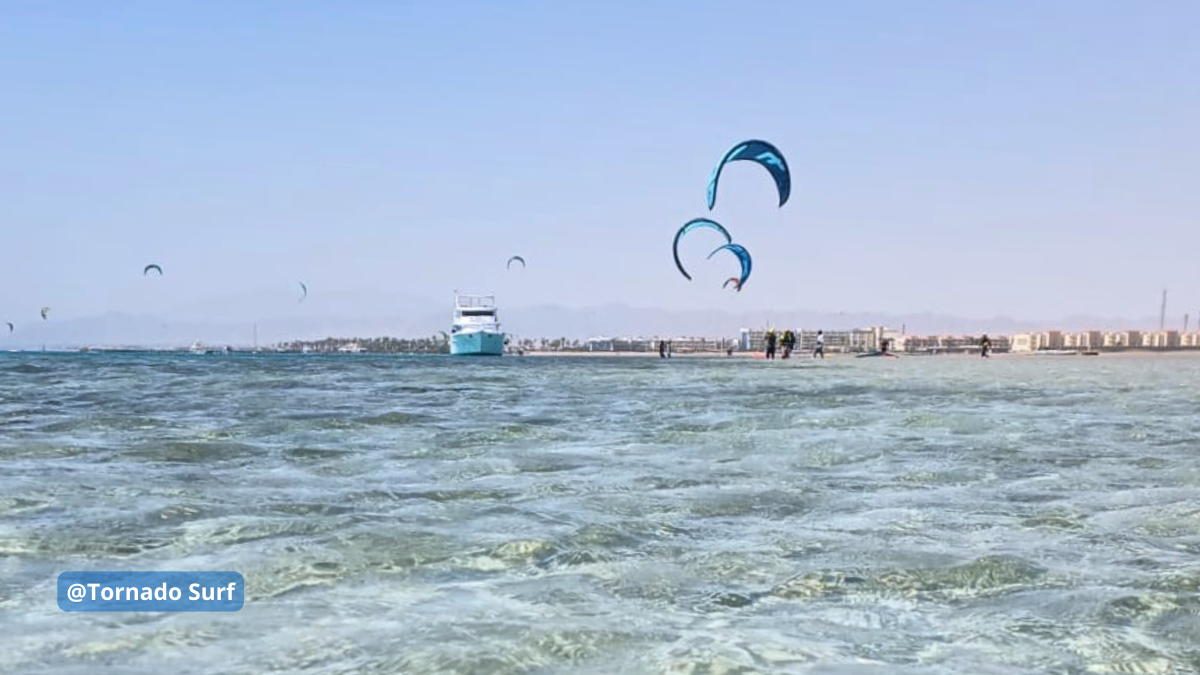
Stay safe, ride hard, and make every session an epic adventure.+
Happy kitesurfing!
#wearahelmetlikeapro #StaySafe #KiteSmart #SafetyFirst
For more tips and safety guidelines, visit the IKO YouTube channel: @IKOintl
Virginie Rochette: A Journey of Passion, Dedication, and Adventure in the World of Kitesurfing.
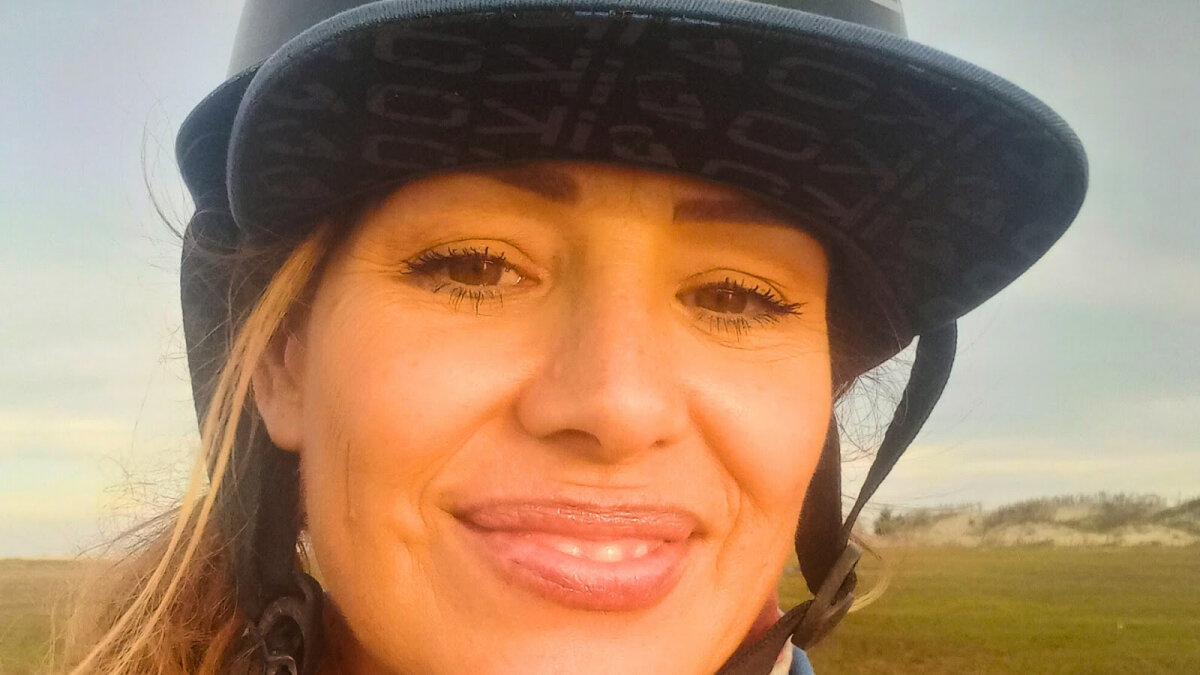
Exploring the World of Kitesurfing with Virginie.
In the dynamic world of water sports, kitesurfing stands out as an exciting sport that connects with nature and offers incredible adventures, attracting enthusiasts from every corner of the globe. Behind the beauty and adrenaline of this discipline often lies a unique personal story, a journey of discovery, teaching, and passion. Virginie, new IKO Examiner, is the perfect example; her story perfectly embodies the fusion of adventure, passion, and dedication. Through her eyes, smile, and stories, we tell you how beautiful and fascinating the world of kitesurfing can be. Let yourself be inspired!
“I have always been a passionate enthusiast of sports, but especially board sports!”
The Virginie's Journey into Kitesurfing.
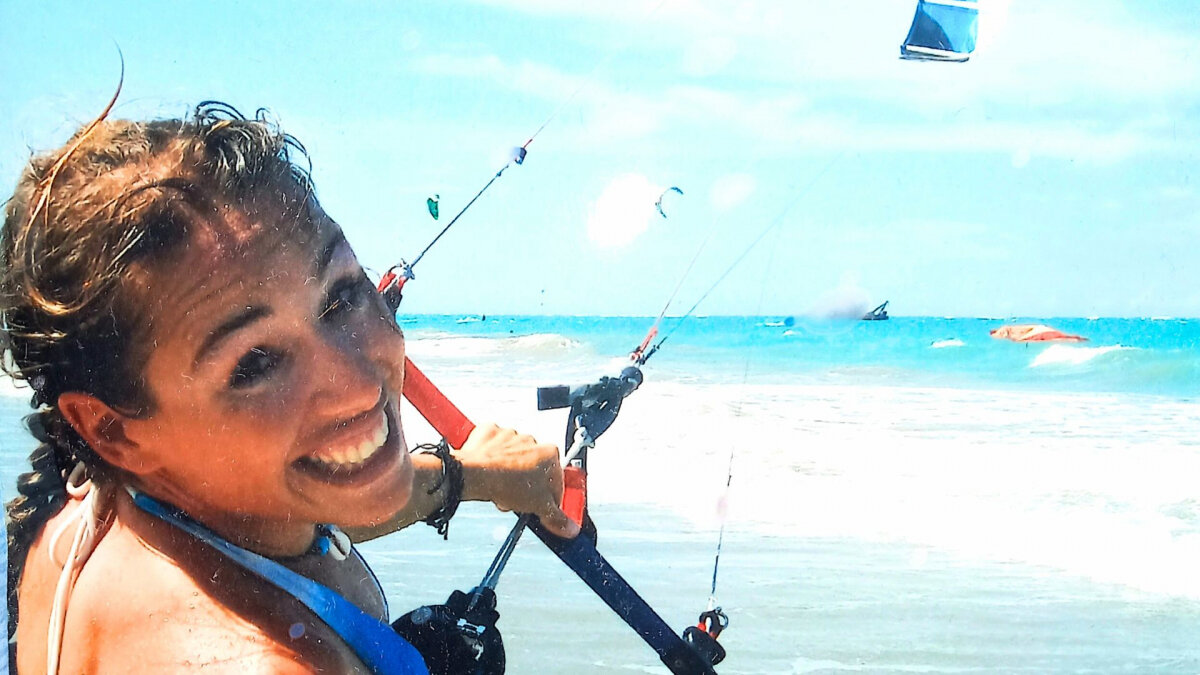
Virginie took her first steps into the world of sports from a young age. Hailing from Grenoble, amidst the majestic French Alps, she cultivated her passion for board sports and nature from a tender age. Her love for snowboarding led her to tackle snowy peaks, while the allure of wind and water drew her towards windsurfing. It was during a day out on the lake, watching her snowboarding friends take up kitesurfing, that the desire to try this new sport ignited within her. Despite warnings from her male friends, who deemed kitesurfing too dangerous for a girl, Virginie embraced the challenge with determination and embarked on her journey into the world of kitesurfing.
“My male friends told me that I was a girl, so I shouldn't try because it was difficult and dangerous. However, their words only further fueled my motivation, and I promptly booked a package of kitesurfing lessons. Hahaha! Back then the equipment was quite different, and I began learning with a 2-line kite and a directional board with foot straps...despite being a beginner, I managed to cross the pond on the first attempt, but I didn't really know how to stop!
The Decision to Embrace Kitesurfing Professionally.
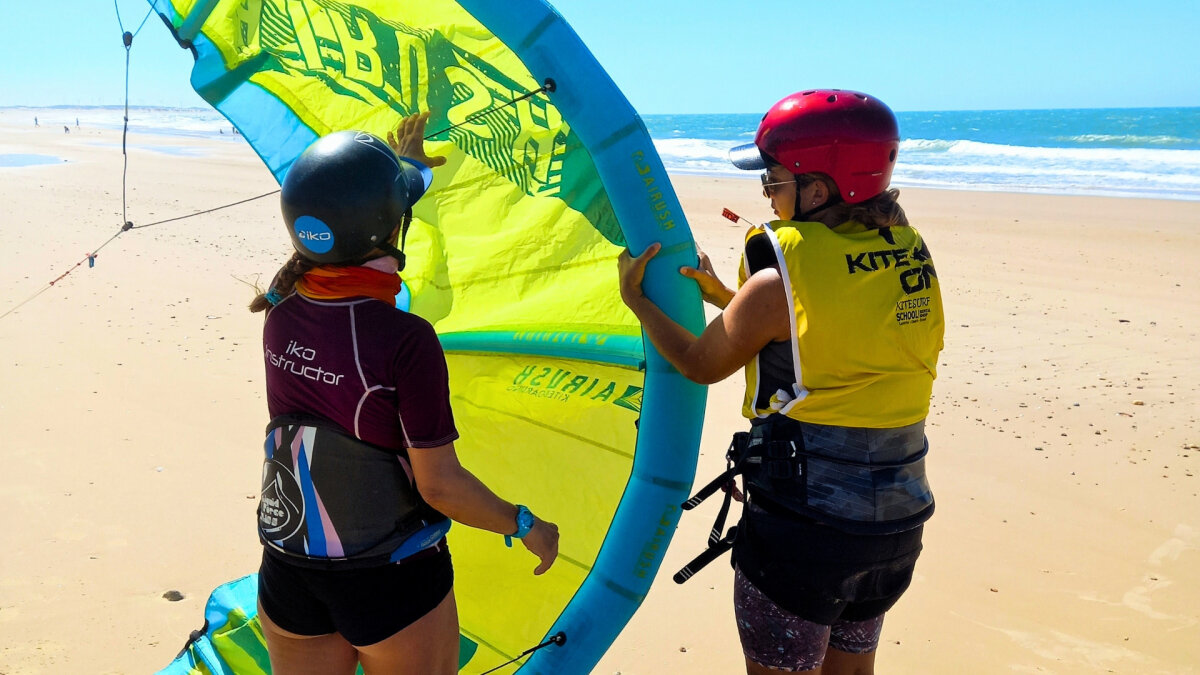
An encounter with a kitesurfing instructor during a trip to Egypt proved to be a pivotal moment for Virginie. Attracted by the idea of turning her passion into a career and with the desire to explore the world following the wind and doing what she loved, she made the life-changing decision to pursue certification as an IKO Instructor.
“I decided to take the IKO Instructor Course (ITC - Instructor Training Course) to see how it was, and then I took one year out of my job to put it into practice and start traveling.”
She traveled the world's coastlines, including those of the Dominican Republic, Venezuela, Brazil, and Cape Verde, immersing herself in diverse cultures, encountering new challenges, and accumulating invaluable experiences along the way.
From Passionate Kiter to IKO Examiner.
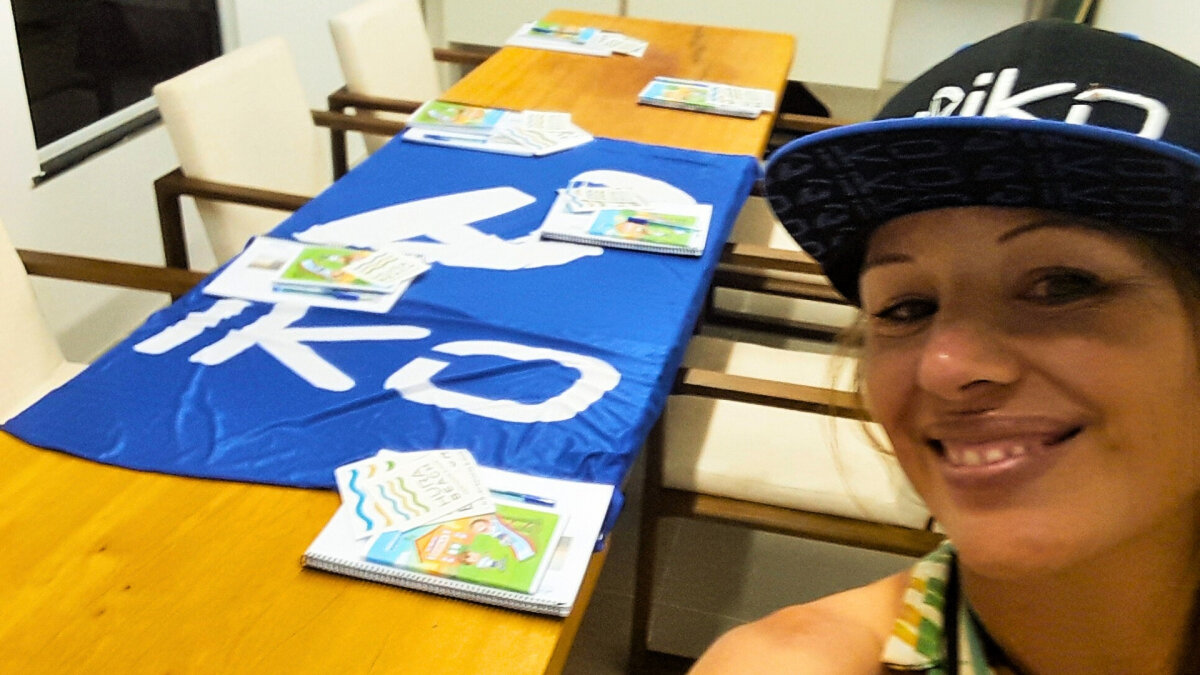
After years of teaching and dedicating herself to kitesurfing, Virginie achieved a new milestone by becoming an IKO Examiner. Her journey to this prestigious role was marked by challenges and sacrifices, but also by unwavering determination; for this reason, it was even more satisfying. From managing a kitesurfing school in Brazil to organizing IKO professional courses, Virginie has demonstrated extraordinary passion and commitment to promoting and developing kitesurfing.
“It hasn't been easy; it's been a long and difficult process, with hours and hours of study and training. But it was worth it, and now I’m looking forward to putting all this knowledge into practice on my own!”
Promoting Kitesurfing in Brazil and Beyond.
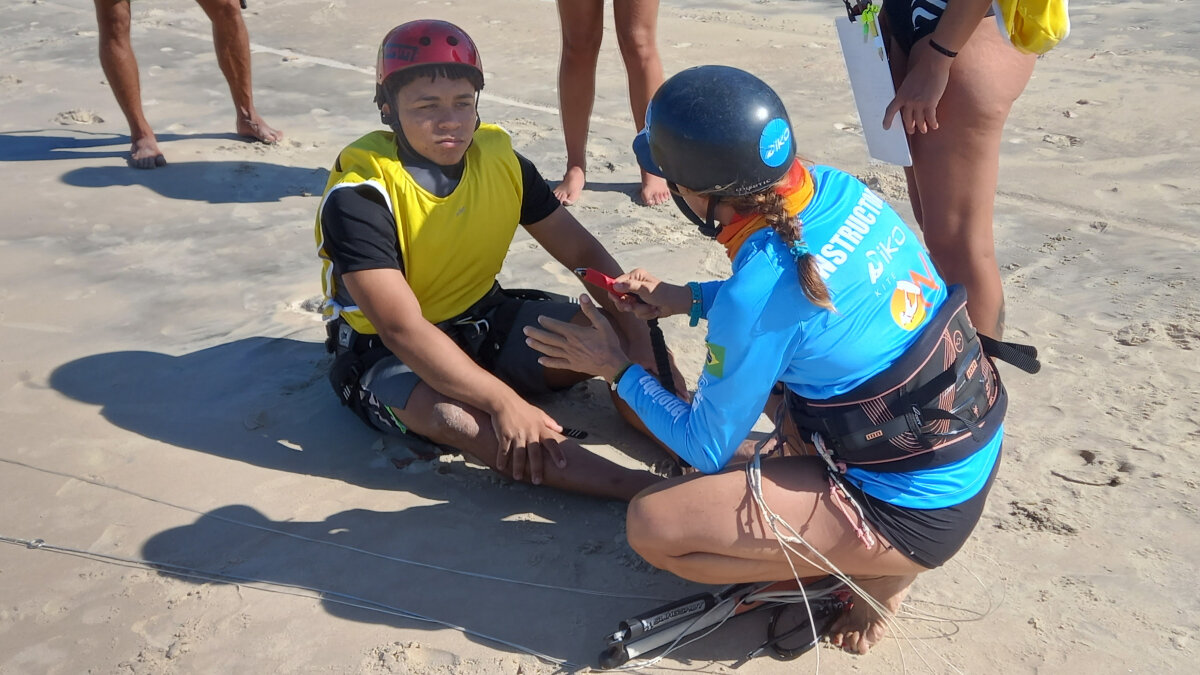
As an IKO Examiner, Virginie aims to promote and advance the sport of kitesurfing, focusing particularly on her efforts in Brazil, where she strives to foster its growth and development within the local community. In a country with many kitesurfing schools and instructors, her goal is to maintain high standards of education and safety, motivating potential kiters to obtain IKO certification. Leveraging her experience and dedication, Virginie aims to cultivate new kitesurfing enthusiasts and encourage female involvement in this captivating sport. Additionally, she aims to tackle the challenges faced by Brazilian kiters who encounter economic and logistical obstacles in their journey to become IKO Instructors.
"Sometimes it can be difficult for them to envision their future, plan their time, and investment, so I’m providing various payment and organization solutions."
Thrilling Moments and Adventures as an IKO Instructor.
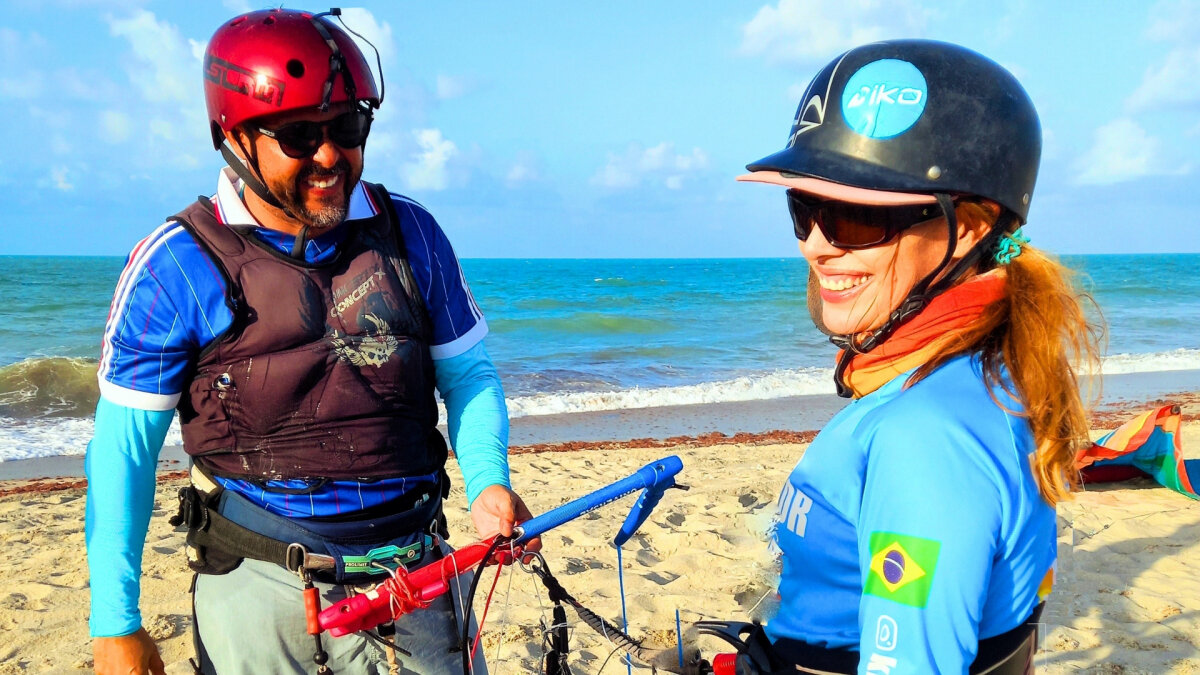
Throughout her journey as an IKO Instructor, Virginie has experienced many memorable moments. 'I have a lot of stories!' she exclaims, with many students leaving a lasting memory. However, what truly brings her satisfaction in her work is witnessing her students progress in kitesurfing, especially when they start with no experience. After all, seeing their excitement as they conquer new skills and overcome challenges is the ultimate reward for her dedication and passion. This is one of the most beautiful things for an IKO Instructor, this is the #ikoinstructorlifestyle.
Unraveling Lagoinha: A Kitesurfer's Paradise in Ceara, Brazil.
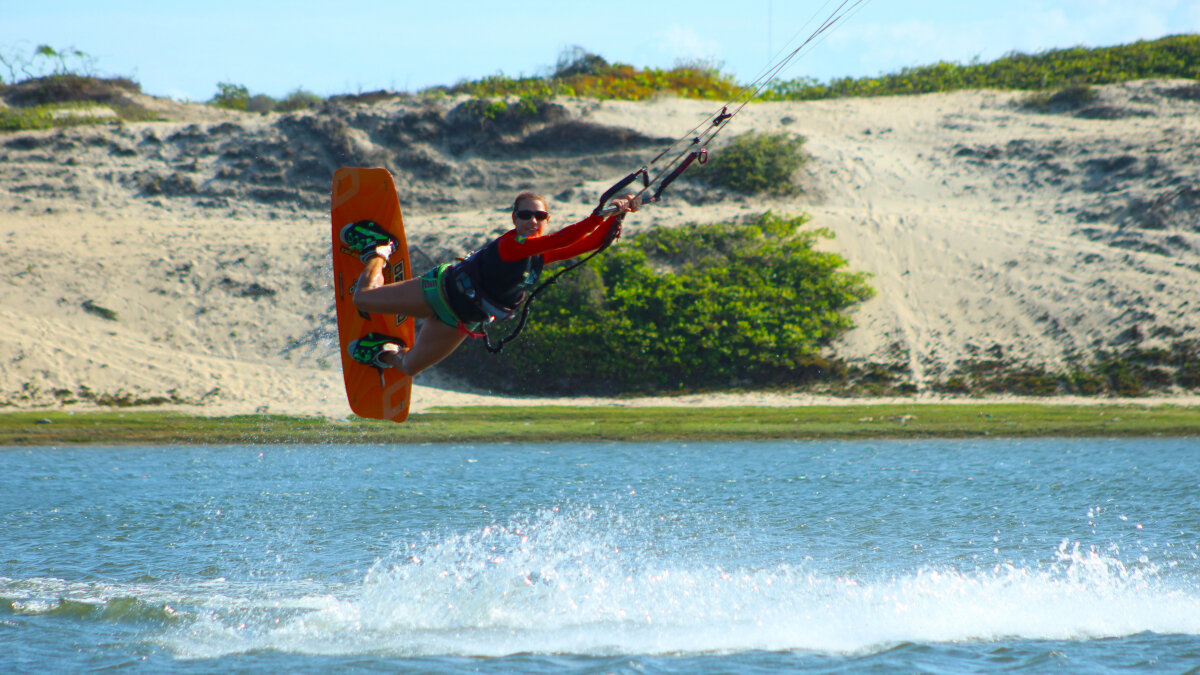
For Virginie, Lagoinha in Ceara, Brazil, represents the perfect spot for kitesurfing. With its vast pristine beach and the tranquility of Jegue Lagoon, it provides a picturesque environment for kiters of all levels to enjoy exciting kitesurfing sessions and moments of peace in nature.
“My favorite spot is, of course, Lagoinha in Ceara, Brazil, where I live. It boasts a vast and uncrowded beach with stunning scenery, including the picturesque Jegue Lagoon. This lagoon offers buttery flat, shallow freshwater and enjoys a consistent wind for seven to eight months of the year. It's ideal for teaching and practicing unhooked freestyle, my favorite discipline. In the tranquil waters, there are usually few other kiters at the end of the day, with approximately ten hours of wind and sunshine daily. The natural landscape is breathtaking, especially during sunset when you may be fortunate enough to witness both the sun setting and the moon rising simultaneously—a truly unforgettable experience!”
Virginie's Perspective: The Thrills and Challenges of Becoming an IKO Instructor.
Virginie believes that becoming an IKO Instructor is an incredibly rewarding experience. For her, the job is not just a source of income but an opportunity to live her passion, meet different people, and create special bonds. She believes that teaching kitesurfing can truly change the lives of students and loves the idea of sharing her knowledge in paradisiacal locations around the world. Despite the difficulties and challenges inherent in being an IKO Instructor, Virginie firmly believes that this profession offers unparalleled opportunities for both personal and professional growth.
"Especially for women, kitesurfing doesn't necessarily require strength or weight; it's more about technique (and good lessons from the beginning). Of course, you have to be (or become) a sporty person, but it's more accessible than it seems, and women make excellent IKO Instructors. We generally have a natural compassion for our students, patience, and professionalism, which are essential for this job (often we have more of it than men). We must establish ourselves from the start by being pragmatic and professional, teaching both men and women.
The world of kitesurfing needs more female IKO kitesurfers, assistants, instructors, coaches, and Assistant Trainers, and I hope that my new status as an IKO Examiner inspires more women to follow in my footsteps!"
Exploring the Essence of Kitesurfing: Virginie's Journey.
Virginie's journey into the world of kitesurfing is a captivating exploration of passion, determination, and adventure. Through her story, we can grasp the essence of this fascinating sport and its ability to transform lives and inspire future generations. Whether teaching beginners or examining aspiring IKO Instructors, Virginie continues to embody the core values of IKO Instructor: passion, safety, and dedication to her craft.
Author: Marica Moda
How IKO Instructors Can Convert Their Certification with OPES (Organization for Sports Education) Recognized by CONI (Italian National Olympic Committee).

Guide to Converting IKO Kitesurf Instructor Certification to OPES/CONI Certification - Sailing Instructor, discipline DV005 - Kiteboarding, according to the requirements of the National Sports Qualifications System SNaQ.
IKO assists you in navigating the steps to obtain the dual certification IKO - OPES/CONI and pursue the profession of Kitesurf Instructor in Italy.
Why obtain the dual certification IKO - OPES/CONI?
The conversion opportunity is open to all certified kitesurf instructors, whether Italian or foreign, working in Italy. Its aim is to improve the quality of sports education and ensure greater professionalism and economic fairness in the world of kitesurfing.
This dual certification ensures that kitesurf instructors have the necessary skills to teach effectively and safely, offering the opportunity for regular employment within sports associations and/or kitesurf schools, and ensuring stable income and associated labor rights.
CONI, OPES, and IKO together in Promoting Sports in Italy.
The Italian National Olympic Committee (CONI) is the national body responsible for the promotion and organization of Olympic sports.
OPES (Organization for Sports Education) is a sports promotion organization recognized by CONI. It collaborates closely with CONI and international organizations like IKO (International Kiteboarding Organization) to promote physical education and sports in Italy.
OPES is committed to converting IKO Kitesurf Instructor certifications to OPES/CONI certifications and recognizes the teaching provided by IKO as of a high standard. Thus, OPES enables the conversion of instructors' diplomas issued by IKO Examiners into OPES/CONI diplomas.
This collaboration is essential to ensure a professional and safe sports system for all.
Towards a Safer and Professional Sports Future: Optimism and Collaboration between IKO - OPES/CONI.
The goal is to improve the quality and safety of sports education in Italy, building a more solid and professional future for the kitesurfing world in Italy, in compliance with local regulations.
Thanks to the collaboration between IKO and OPES/CONI, the procedure for converting the IKO certification to OPES/CONI certification is straightforward, affordable, and can be carried out by all IKO Instructors wishing to work in kitesurf schools in Italy that are part of the same association.
Do you want to become an IKO Instructor and work in Italy? Here's how your IKO certification will be converted into an OPES/CONI certification.
The procedure to obtain the dual certification is as follows:
- At the end of the IKO course ITC (Instructor Training Course), the organizer will compile a form with the data of instructor candidates who have successfully completed the course, qualifying as IKO Kitesurf Instructors Level 1.
- The form will be countersigned by the course's responsible IKO Examiner.
- The form will be sent to the OPES central membership office, which will issue the certifications at a cost of €25.00 per diploma.
- All candidates who successfully complete the IKO Instructor Course - ITC L1 will receive the National Diploma as Kitesurf Instructor OPES/CONI - Sailing Instructor, discipline DV005 - Kiteboarding, according to the requirements of the National Sports Qualifications System SNaQ.
If you are already an IKO Instructor, Italian or foreign, and want to work in Italy, here are the steps to follow.
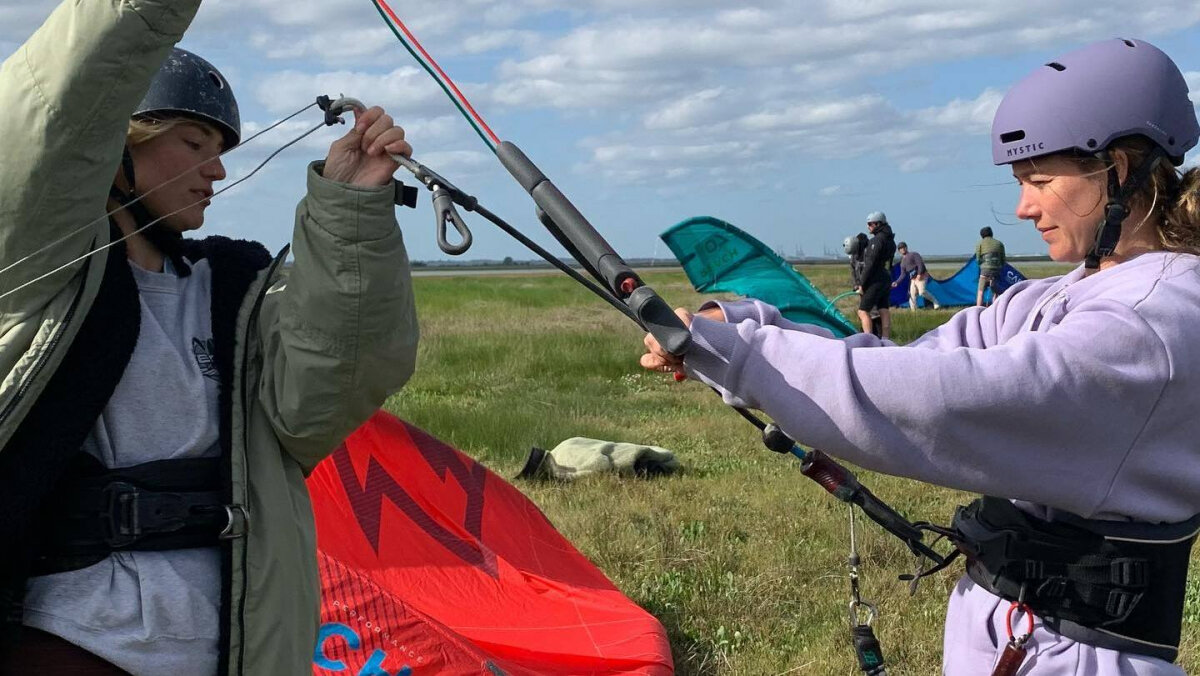
For already certified IKO Instructors who want to work in Italy, it is possible to directly request the conversion of their IKO Kitesurf Instructor certification from OPES/CONI, obtaining the National Diploma as Kitesurf Instructor OPES/CONI - Sailing Instructor, discipline DV005 - Kiteboarding, according to the requirements of the National Sports Qualifications System SNaQ.
The procedure requires filling out a form, paying an annual fee to OPES/CONI, and submitting the necessary documentation. Once the conversion is completed, the OPES/CONI certification will be issued.
The steps to follow are:
- Fill out the conversion application form downloadable from the IKO/OPES website. You can find the request form here: OPES/IKO Conversion.
- Attach your IKO Kitesurf Instructor certification to the email.
- Attach the receipt of payment of the annual fee paid to OPES/CONI, currently €15.00: payment to be made by bank transfer to O.P.E.S. - Organizzazione Per l’Educazione allo Sport - Via Salvatore Quasimodo, 129 – 00144 ROME.
- Cod IBAN: IT11L0538703208000001088781 – BIC/SWIFT: BPMOIT22XXX
- Banca Popolare dell’Emilia Romagna
- Specify in the reason for payment: "conversion IKO/OPES name and surname".
- Send all documentation to the following email address:
- OPES/CONI will issue the new certification.
It should be noted that the OPES/CONI equivalence applies only to IKO Instructors with a valid certificate. If the IKO certificate has expired, the OPES/CONI equivalence will not be valid, but you can attend an IRC course (Kitesurf Instructor Reinstatement Course) for reinstatement.
The agreement, in force since 2020, has an annual duration and is tacitly renewed in the following years.
The national contact person for OPES/CONI for maintaining relations with IKO is Andrea Frateiacci.
Some Italian IKO Centers offer certification conversion to their instructor candidates.
To facilitate instructor candidates, some Italian IKO Centers offer to cover the cost of converting the IKO - OPES/CONI certification for their candidates, including it in the cost of the professional ITC course (Instructor Training Course).
To ensure that the certification conversion is included, contact directly the IKO Center where you will attend the professional instructor course (ITC - Instructor Training Course).
Joint Commitment.
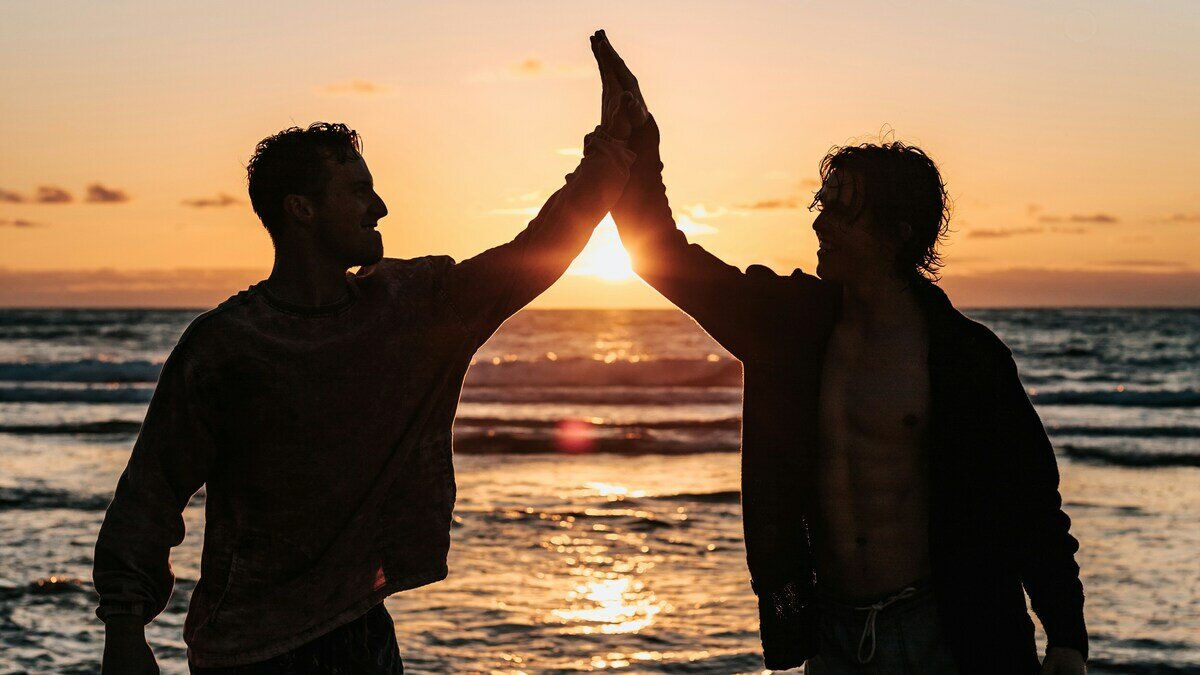
This collaboration represents a significant step towards a safer, more professional, and fairer sports future for kitesurfing in Italy.
This joint commitment to excellence in sports education reflects the determination to promote high standards in the sector, ensuring a professional and safe environment for all kitesurfing enthusiasts in Italy.
Kiting is constantly growing and evolving. New disciplines emerge, equipment improves, spots get discovered and teaching techniques are enhanced.
We recently updated the IKO Kitesurf Instructor Manual to include the latest knowledge and experience from our elite trainers worldwide.
IKO Kitesurf Instructor Manual 7.0 Now Available
Concise Lesson Plans
Speed up the learning process and make lessons more enjoyable
Emphasis on ‘Guided Discovery’
Students progress quickly with hands-on learning
Focus on Students’ Mental States
Ensure students feel good and have fun while learning
Improved Readability
New graphics and easier to understand concepts
If you’re an IKO certified instructor with active membership, get a copy of the new manual by logging in to your account.
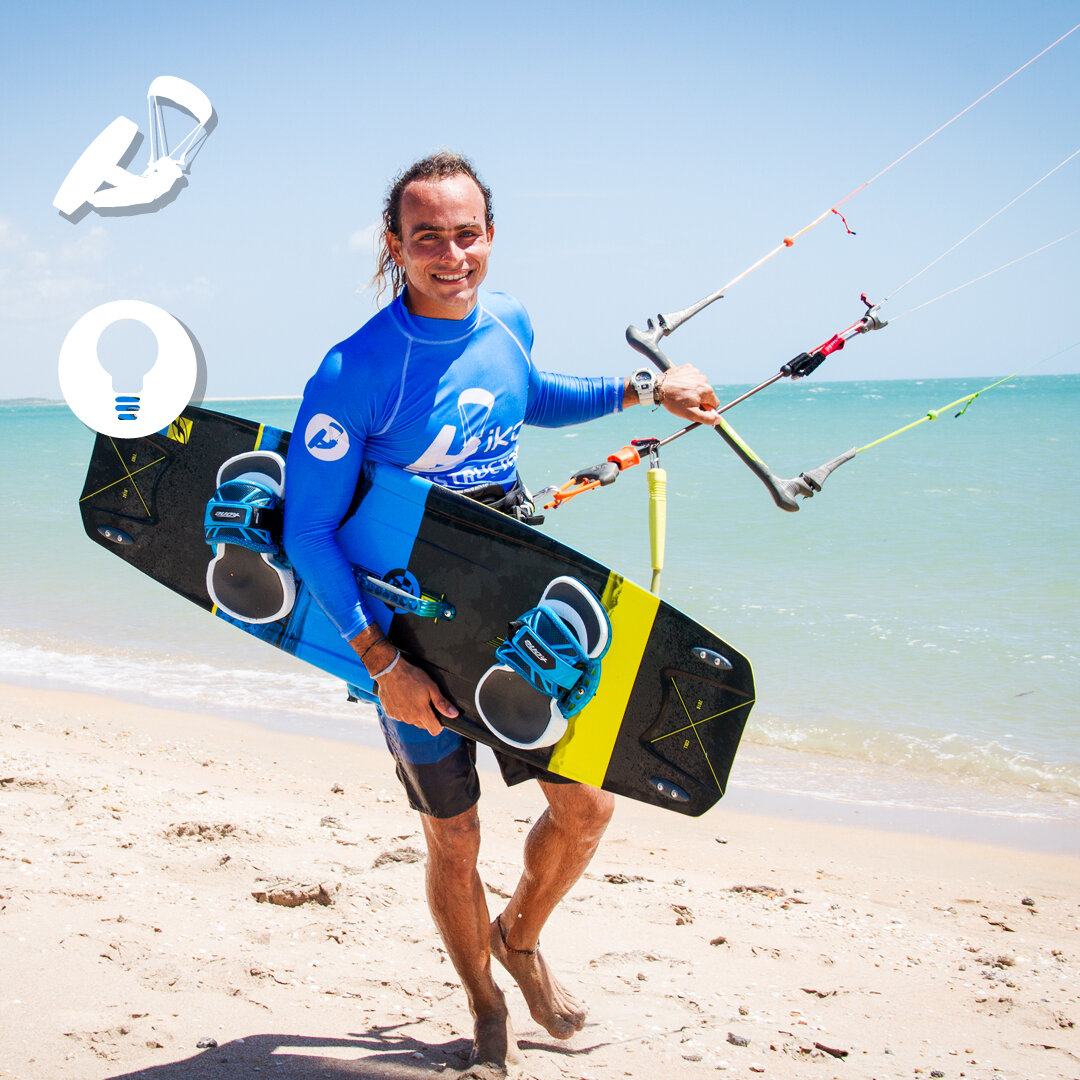
Very few people nowadays learn and teach themselves kiteboarding, let alone do we recommend this to anyone. Few decades ago when kiteboarding began basically everyone did so. There were no written techniques, progression or methods to teaching and or even learning; it was all basically trial and error until you were “up and riding”.
It might be hard to imagine for those who learned to kiteboard within recent years though kiteboarding was a whole different sport back then. The learning curve was much different and the safety aspect were virtually non existent.
Fast forward to today and we are spoiled; basically anywhere you go in the world there are certified IKO instructors and centers. These Instructors are safe, professional, trained, friendly, knowledgeable, excellent teachers that can get virtually anyone up and riding safely within a matter of hours.
Thousands of people every year are becoming kiteboarding Instructors because of many reasons. We tend to see that one first falls in love with the sport, decides they want to share their passion with others and then takes a professional training courses to begin their new journey.
Some individuals share their passion and develop the sport nationally; others decide to travel around the globe, chasing the wind and teaching others while doing so. Becoming an IKO Instructor is a rewarding career path where all that is possible and more.
We know what soft and hard skills make a great instructor though we want to hear from you!
What makes a great kiteboarding Instructor and why did you become one?
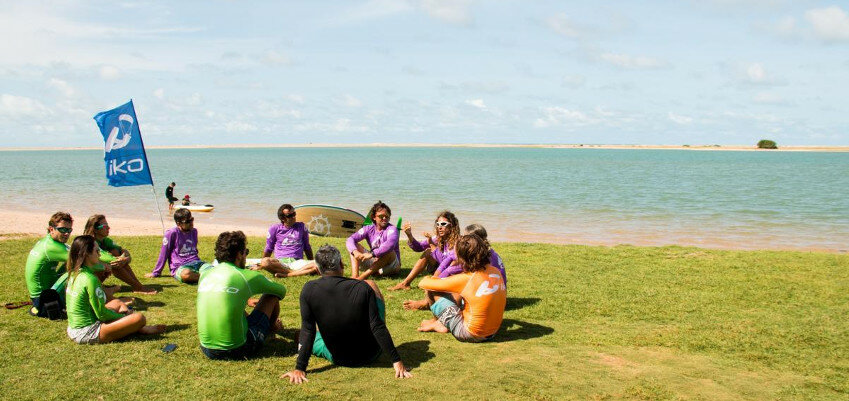
New Organizer Guide now available!
The AITC, ITC, and Coach Organizer Guides are now combined into one guide. All charts with the incomes and expenses are clearly visible, as well as the organizer task list before, during and after the training. This will help Centers to stay organized.
Quality is everything. To ensure the Assistant and Instructor candidates are trained properly, it is important they receive the course content in color (exception are made only where it is costly or not possible). IKO will verify that the guides are printed in color by the feedback sent from the candidates at the end of the course.
To control and improve the quality of the Assistant Trainer course, only ONE Assistant Trainer can be trained during an Assistant Trainer course, given there is at least 2 Assistant candidates. The Assistant Trainer course is no longer the responsibility of the school. Assistant Trainers need to contact the IKO to schedule their course. It is highly recommended to follow an AITC as an observer before doing the real ATTC. Expect this procedure to become mandatory before the end of 2018.
Assistant Course
The AITC-Plus will be renamed and simplified to AITC. We will push that all websites will be updated accordingly. This course has been a major success of the IKO in 2017. Many candidates have provided positives feedback about it. We are now working to update the manual with the feedback we have received from both Candidates and the Examiner team. We plan to release an updated version in Spring 2018.
Note that now Assistant candidates are required to be a kiteboarder Level 4 or equivalent instead of being level 3N. This will help candidates be better prepared for the course.
Instructor Course
Printed copies of the kiteboarder handbooks are no longer included in the ITC pack. The handbook are now available free for all Instructors with a valid membership as eBook on the IKO app. ITC candidates will now receive IKO merchandise and 5 certification credits after their course. Certification cards will disappear as Virtual Card (Vcard) on the IKO App will become more popular. Instructor Level 1 can now teach up to the kiteboarder Level 4 and certify their students online.
Final update and reminder
During pro courses, every candidates must wear a helmet during beach exercises/workshops/teaching practices as well as a buoyancy aid when in the water. Additionally, remember that every Assistant Instructor, Instructor, Assistant Trainer and Examiner must also connect their leash to the front/side part of their harness at all times. This is a global effort to give the proper image and example to current and future students.
Thank you for reading and understanding,
If any questions please do not hesitate to contact us,
Windy Regards,
IKO
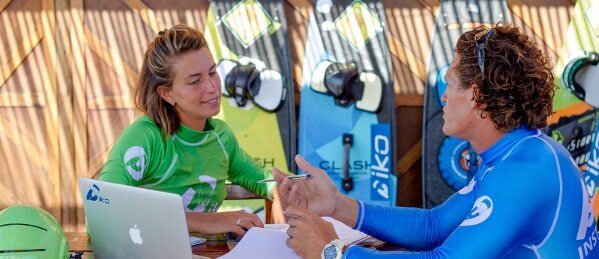
1. Ride as much as possible!
2. Practice the safety procedures in real situation
3. Work as Assistant Instructor
4. Study the theory!
Review the theory of the Assistant Instructor manual before the beginning of the ITC. Meteorology, Aerodynamics, International Communication Signs, Equipment, etc...
5. Watch the video “Teaching Discovery Level 1”
Extra Tip:
“Professional kiteboarding lessons: about $60/hr. Being 100% confident at the end of the lesson: Priceless”
How meditation and mental visualization can improve your kiteboarding skills.
Meditation and mental visualization before kiteboarding
Can I combine meditation while kiteboarding, or is kiteboarding a kind of meditation?
A lot of people fantasize about the “dream job” where you can spend the whole day at the beach and enjoy your life while practicing your favorite hobby. Be certain in advance who you are and what you want. If you decide to work as a Kiteboard Instructor, it doesn’t matter if you do it just for one season, for your vacation or as a full time job, however you need a professional Instructor qualification. Of course this qualification will cost some money and you might wonder what you will earn as an IKO Instructor. IKO interviewed for you different IKO Affiliated Centers to get some interesting information, which will show you what an IKO Instructor can earn on average.
Accommodation and food
Working hours
Salary
Kiting and free time balance
Learning and teaching situation
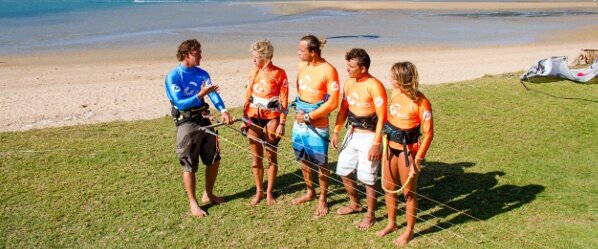
More incomes for your school
Easy and quick to schedule
Receive exclusivity
Quality increased
4 steps to work and live your passion worldwide that will change your life
Sebastiano Bergamini currently lives at the wonderful kitespot of Cabarete in the Dominican Republic. In his hands, the 25-year old kitesurfing instructor holds only the bar from his gear. In front of him, the wonderful blue ocean surrounds this Caribbean island. He is living his dream in one of the most beautiful places on Earth.
Step 1: Want it
Step 2: Get ready
Step 3: Do it
Step 4: Enjoy
| Contact IKO | |
 |
Call us |
| Our office team is available from 12:00 p.m to 5:00 p.m and 6:00 p.m to 8:30 p.m UTC/GMT. +1(809) 5719530 |
|
 |
Email us |
| Not found your answer from the FAQs? We experience high volume requests, however we will do our best to answer as soon as possible. |
|
| Contact IKO | |
 |
Call us |
| Our office team is available from 12:00 p.m to 5:00 p.m and 6:00 p.m to 8:30 p.m UTC/GMT. +1(809) 5719530 |
|
 |
Email us |
| Not found your answer from the FAQs? We experience high volume requests, however we will do our best to answer as soon as possible. |
|

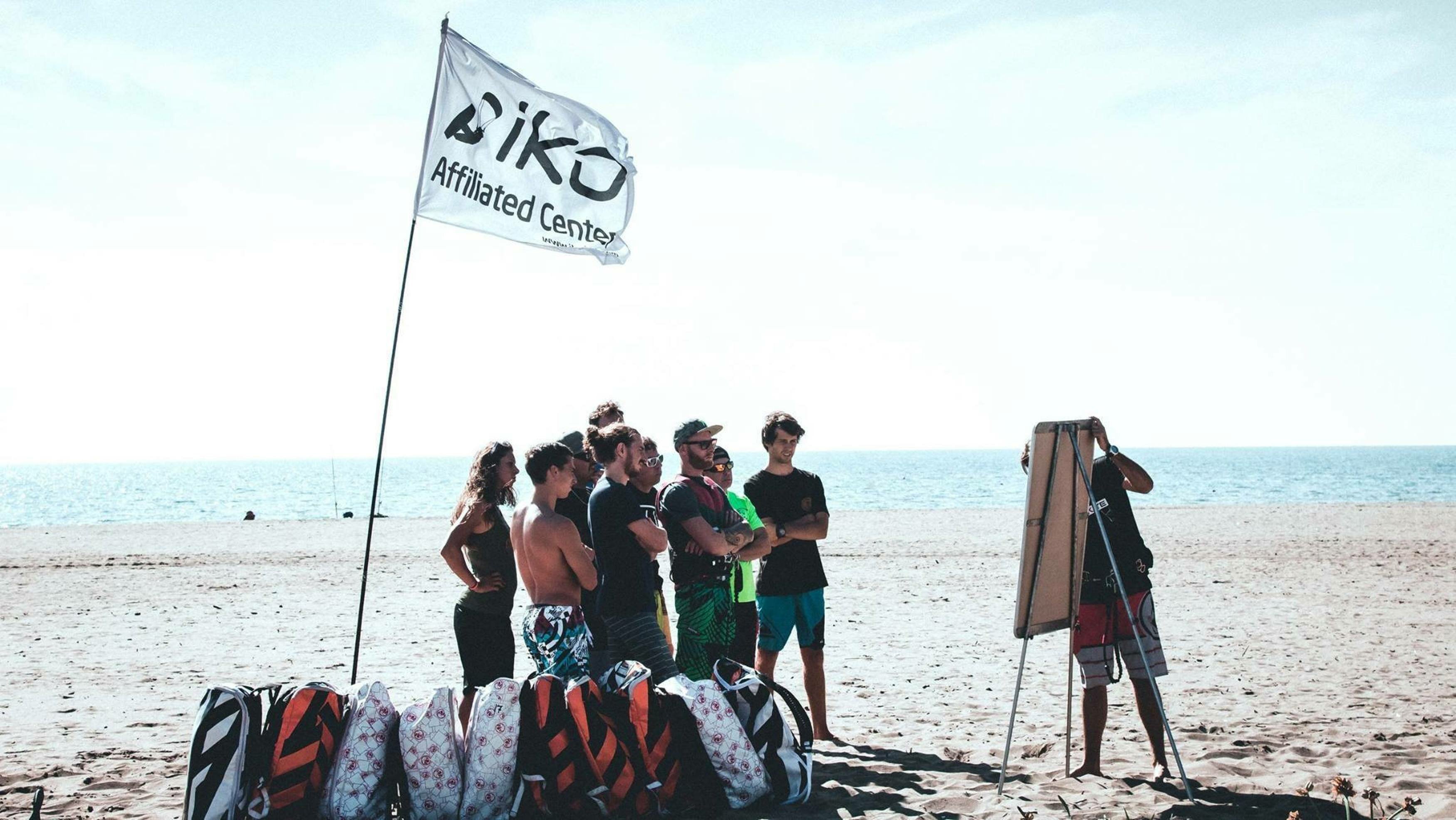
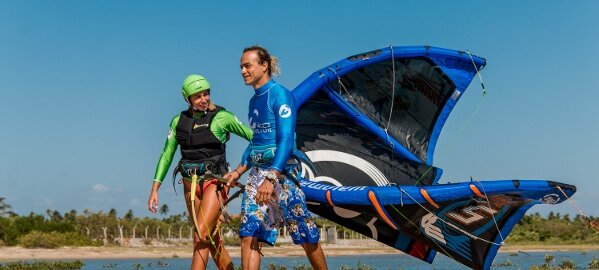
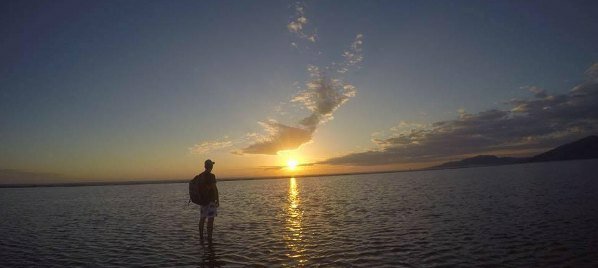
.png)

